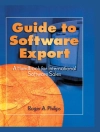Microsoft Windows Presentation Foundation provides the foundation for building applications and high–quality user experiences in Windows Vista. WPF blends application user interface, documents, and media content to provide richer control, design, and development of the visual aspects of Windows programs.
Author Matthew Mac Donald shows you how WPF really works. His no–nonsense, practical advice will get you building high–quality WPF applications quickly and easily. Mac Donald will take you through a thorough investigation of the more advanced aspects of WPF, and its relation to other elements of the Win FX stack and the .NET Framework 3.5, to complete your understanding of WPF and VB 2008.
WPF’s functionality extends to support for tablet PCs and other forms of input device, and provides a more modern imaging and printing pipeline, accessibility and user interface automation infrastructure, data–driven user interface and visualization, as well as the integration points for weaving the application experience into the Windows shell.
Table of Content
Introducing WPF.- XAML.- The Application.- Layout.- Content.- Dependency Properties and Routed Events.- Classic Controls.- Windows.- Pages and Navigation.- Commands.- Resources.- Styles.- Shapes, Transforms, and Brushes.- Geometries, Drawings, and Visuals.- Control Templates.- Data Binding.- Data Templates, Data Views, and Data Providers.- Lists, Trees, Toolbars, and Menus.- Documents.- Printing.- Animation.- Sound and Video.- 3-D Drawing.- Custom Elements.- Interacting with Windows Forms.- Multithreading and Add-Ins.- Click Once Deployment.
About the author
Matthew Mac Donald is an author, educator, and MCSD developer who has a passion for emerging technologies. He isthe author of more than a dozen books about .NET programming. In a dimly-remembered past life, he studied English literature and theoretical physics.












